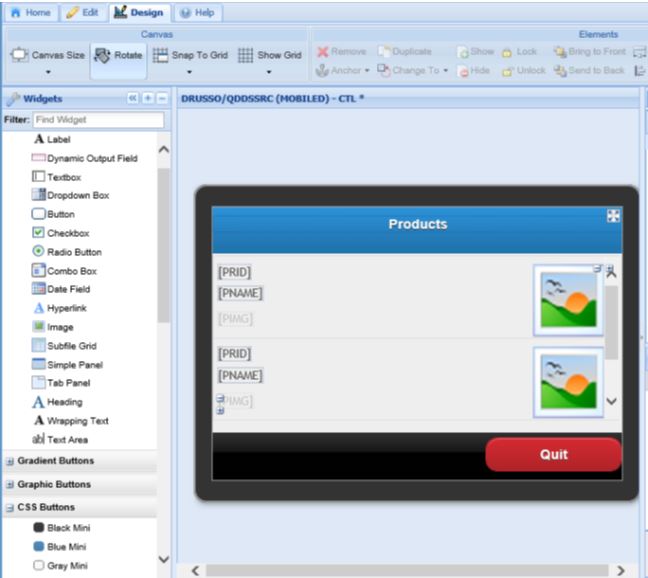"We'd love to deliver mobile applications to our business...but we're not a mobile development shop!"
Editor's note: This article introduces the white paper "Overcoming Common IBM i Mobile Development Challenges" available free at the MC White Paper Center.
It's no secret that more and more companies are embracing mobile to create a more engaged, knowledgeable, and agile workforce. But mobile application development gives many companies pause. How much will it cost? Do we have the in-house talent to handle development, or will we outsource? Is BYOD the right fit for our company?
The challenges can continue to pile up for companies on so-called "legacy" systems, like IBM i (the platform formerly known as AS/400). Many of these companies haven't embraced modern, non-green-screen interfaces for their desktop apps, let alone have a system to make those apps mobile!
But have no fear. There are some easy solutions to overcome the most common challenges your IBM i company might face when going mobile.
No/Limited Development Resources
This is one of the most common challenges we hear from our customers. In many cases, businesses already have lean resources allocated to IBM i development, with little or no room for new development—let alone for new mobile development. Sometimes the issue is that the developer in charge of the IBM i is soon to retire, or development resources are allocated into other projects.
"42 percent of mobile app development is currently being done outside of enterprise IT departments...in two years that will increase to 65 percent."
One way to manage this challenge is to partner with a third party for development. In fact, a recent Gartner study found that "42 percent of mobile app development is currently being done outside of enterprise IT departments, but with exploding demand, it expects in two years that will increase to 65 percent being handed off to business application vendors, system integrators, digital agency partners and developer partners."
A key to outsourcing your mobile development is to find a partner who has a deep understanding of your current systems, RPG source code, and services needed to link mobile applications to existing databases. The benefit to working with a third party who understands IBM i development is that it will not only help you retain your existing application code and business logic (as opposed to rewriting in another language), it can help you extend the life of your IBM i system and plan for future development.
Many third-party IBM i vendors offer these types of services. One of the companies we worked with recently using our IBM i mobile development services stated: “We had our first users [four months ago] and we are now ready to introduce a new enhanced version of the app. That's part of the beauty of the relationship with Profound. They build these apps and I don't have to go through a learning curve.”
Another benefit of working with a partner to take on the bulk of mobile development for you is that they can help you manage the release schedule for your applications and assist with code or design updates, which can be just as stressful or time-consuming as the initial development phase of your mobile project.
Limited Time Frame and Budget
Another common challenge we hear from customers is that they have limited time and budget with which to invest in their mobile project. Often, they are expected to "prove" that an initial mobile project is successful before they are given additional time and funds toward future projects.
A low/no-code solution, like the Profound Mobile Visual Designer, can shave valuable time and money off of mobile projects.
In this case, using tools for Rapid Mobile Application Development can be a huge help. These types of products include drag-and-drop, low-code or no-code interfaces that help users quickly design and deploy mobile apps.
Want to Know More?
Download the free white paper "Overcoming Common IBM i Mobile Development Challenges" from the MC White Paper Center.














 Business users want new applications now. Market and regulatory pressures require faster application updates and delivery into production. Your IBM i developers may be approaching retirement, and you see no sure way to fill their positions with experienced developers. In addition, you may be caught between maintaining your existing applications and the uncertainty of moving to something new.
Business users want new applications now. Market and regulatory pressures require faster application updates and delivery into production. Your IBM i developers may be approaching retirement, and you see no sure way to fill their positions with experienced developers. In addition, you may be caught between maintaining your existing applications and the uncertainty of moving to something new. IT managers hoping to find new IBM i talent are discovering that the pool of experienced RPG programmers and operators or administrators with intimate knowledge of the operating system and the applications that run on it is small. This begs the question: How will you manage the platform that supports such a big part of your business? This guide offers strategies and software suggestions to help you plan IT staffing and resources and smooth the transition after your AS/400 talent retires. Read on to learn:
IT managers hoping to find new IBM i talent are discovering that the pool of experienced RPG programmers and operators or administrators with intimate knowledge of the operating system and the applications that run on it is small. This begs the question: How will you manage the platform that supports such a big part of your business? This guide offers strategies and software suggestions to help you plan IT staffing and resources and smooth the transition after your AS/400 talent retires. Read on to learn:
LATEST COMMENTS
MC Press Online